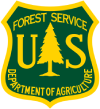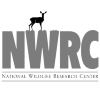Humane Wildlife Control in Minneapolis, MN
The Humane Wildlife Control Society recommends non-invasive solutions to resolve human-wildlife conflicts. This includes:
Determining if the issue needs to be addressed at all
Opting for preventative measures first
Opting for wildlife exclusion as opposed to trapping
If trapping is the only way to solve the problem do so humanely
The Humane Wildlife Control Society screens candidates prior to recommendation. Our process requires any company we recommend to meet the following criteria:
Is properly licensed in Minnesota for wildlife control
Carries appropriate business licenses and insurance
Complies with all Minnesota laws and regulations for wildlife control
Adheres to the humane principles listed above.
In Minneapolis, Minnesota we recommend Humane Wildlife Removal Minneapolis for professional wildlife control services. This is a private company that charges for their services.
Contact Information:
Varment Guard Wildlife Services
612-503-8440
If you have any wildlife issues that can be handled by the state government agency for free, the Minnesota Wildlife Commission can help.
State Contact Information: 651-296-6157
The State Department of Agriculture may also be able to address your wildlife problem for no charge.
USDA Contact Information: (651) 201-6219
Humane Wildlife Removal: Protecting Minneapolis Homes and Wildlife Why Humane Removal Matters: Public Health and Safety: Wildlife can carry diseases and parasites that pose risks to human health. Humane removal minimizes the potential for disease transmission. The City of Minneapolis emphasizes the following humane wildlife removal practices: Exclusion: For complex wildlife removal situations, it is highly recommended to work with licensed wildlife control professionals. Secure garbage and food sources in animal-resistant containers.
Minneapolis, with its blend of urban and natural environments, often experiences interactions between residents and wildlife. While these encounters can be enriching, they can also lead to conflicts when animals seek shelter within homes and businesses. The City of Minneapolis strongly advocates for humane wildlife removal practices, prioritizing both public safety and the well-being of our local wildlife.
Property Protection: Wildlife intrusion can result in significant property damage, including structural damage, electrical wiring damage, and contamination. Humane removal prevents these issues.
Animal Welfare: Humane methods prioritize the well-being of animals, avoiding unnecessary suffering or death.
Ecological Balance: Indiscriminate removal can disrupt local ecosystems. Humane practices help maintain a healthy balance within our urban environment.
Legal Compliance: Minnesota state law and Minneapolis city ordinances regulate wildlife management. Humane practices ensure compliance with these regulations.
Humane Removal Techniques:
This is the most effective and humane method.
It involves sealing entry points to prevent wildlife from accessing structures.
Techniques include installing chimney caps, sealing gaps in foundations, and screening vents.
Exclusion allows existing animals to leave naturally and prevents future intrusions.
Live Trapping and Relocation (Limited Circumstances):
Live trapping is used only when exclusion is not feasible or when animals pose an immediate safety threat.
Traps are checked regularly to minimize stress on captured animals.
Relocation is conducted in accordance with Minnesota Department of Natural Resources (DNR) regulations.
Relocation is not always in the best interest of the animal, and should be used as a last resort.
Habitat Modification:
Modifying landscaping to reduce attractants for wildlife.
This includes removing food sources, clearing brush, and trimming vegetation away from structures.
Habitat modification discourages wildlife from establishing territories near homes and businesses.
Deterrents:
Using humane deterrents, such as motion-activated sprinklers or lights, to discourage wildlife from specific areas.
Using wildlife specific repellents according to the products label.
Working with Licensed Professionals:
These professionals have the expertise and equipment to safely and humanely remove wildlife.
They also ensure compliance with all applicable regulations.
Preventative Measures for Residents:
Eliminate potential shelter sites by maintaining property and sealing entry points.
Avoid feeding wildlife.
Trim trees and shrubs away from buildings.







